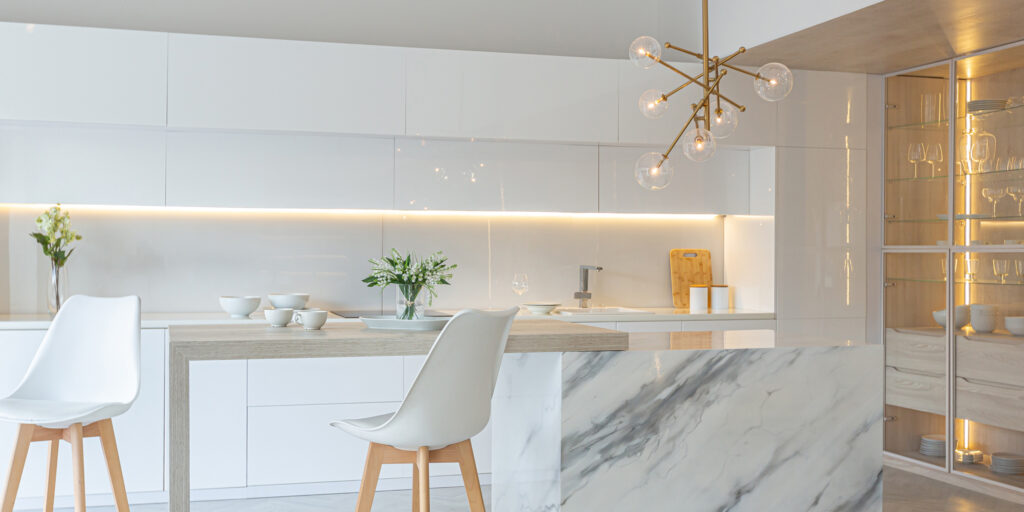BY I.M. LYTEMAN
Modern lighting design reaps the benefits of the LED (light-emitting diode) – superior versatility, efficiency, durability, etc. – but in most cases, nobody wants to look at a bunch of bright points of light. Ironically, that means hiding the appearance of the diode to create a clean, elegant look. These are the 6 keys to masking diode visibility:
SPACING – The space between LEDs, or “pitch.”
A tighter pitch means that LEDs are closer together. The closer your LEDs, the harder it is to discern individual diodes, or hot spots. A tight pitch lowers diode visibility and provides more even distribution of light because the light joins together sooner.
DIFFUSION – Spreading or diluting light output.
The lens of your LED fixture is a key component in mitigating diode visibility. Sometimes, visible LEDs aren’t an issue. In the case of a cove or toe kick with no reflection, a clear lens maximizes lumen output. Exposed fixtures generally require diffusion lenses. A “frosted” lens limits visibility of the diodes while reducing lumen output a little bit. A “milky” lens (sometimes called an “opal” lens) offers the best protection against visible diodes. While the milky lens inhibits the lumen output, it presents a smooth line of light, and a lighting designer factors that diffusion into his/her design.
BRIGHTNESS – The total lumen output of a fixture.
The brightness of an LED ribbon (LED strip) also factors into eliminating hot spots. The brighter your LEDs, the more their light will blend. So, in some cases, high-powered LEDs don’t have to be as close together to perform as well. But be aware that if you plan to utilize dimming functions, as those LEDs get dimmer (less bright) it will be more likely that hot spots occur.
DISTANCE – The depth of the channel, or gap between the LEDs and lens.
The distance between an LED ribbon and diffusion lens in each fixture also factors into diode visibility. The deeper a channel, the more space there is for the light from each diode to mix, which creates a more uniform output. A shallow channel fixture is more prone to produce hot spots than a deep fixture.
REFLECTION – How light that isn’t absorbed by a surface is thrown back.
When executing a successful lighting plan, a good designer considers the surfaces that will be illuminated. Surfaces like polished granite or marble, which are popular in kitchen counters or floors, are highly reflective, which means that while a hidden fixture may put out the optimum light, it may also be visible at certain angles, and hot spots or un-diffused diodes will ruin the desired effect.
VIEWING ANGLE – How you see the fixture.
The diodes in a fixture are most discernable when you look directly at the light source. In cases where you need to use a shallow fixture (or no fixture at all), consider a product like Linea RibbonLyte from Acolyte, an LED ribbon that uses “chip on board” technology and a very tight pitch as well as a special raised phosphor coating that eliminates visible diodes entirely.
To help eliminate unwanted visible LEDs, Acolyte provides a handy chart that shows which RibbonLyte/channel combinations can be used to create diode-free fixtures and cross-references compatible diode-free RibbonLyte products on each channel spec sheet.
